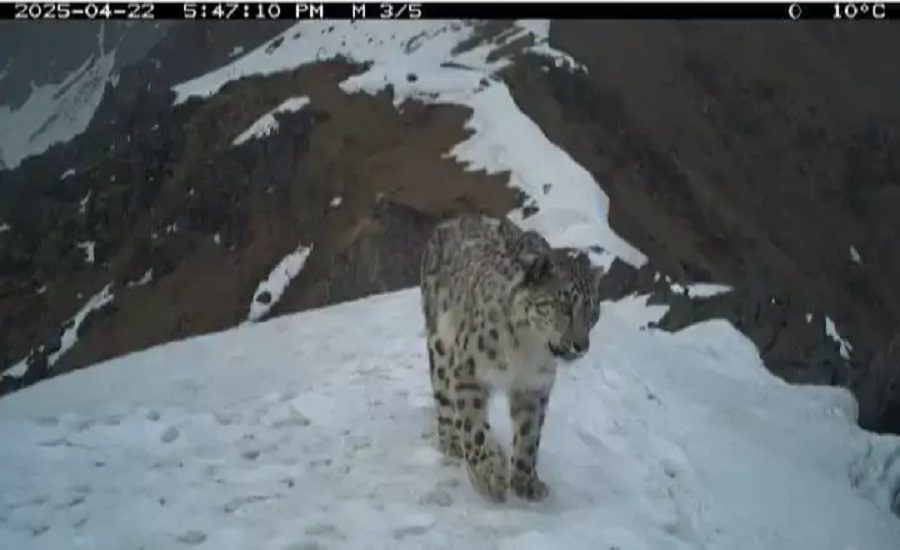Rudraprayag, UK: In a rare and significant wildlife development, a snow leopard has been captured on a trap camera in the upper Himalayan regions of the Ukhimath range under the Kedarnath Wildlife Division. The elusive big cat was seen roaming through the snow-covered icebergs, marking its presence in the area after a long time, according to forest department officials.
This discovery, along with sightings of several other rare animals and birds, highlights the ecological richness and the thriving biodiversity of the region.
Camera Traps Reveal Snow Leopard and Rich Fauna
According to DFO Tarun S, an Indian Forest Service (IFS) officer of 2022 batch, who is supervising the camera trap assessment operations, this is a significant ecological observation. The snow leopard was sighted in areas adjoining the high-altitude Himalayan zones of the Ukhimath range. The species is known to cover vast and remote terrains, making sightings exceptionally rare.
Alongside the snow leopard, yellow-necked mongoose, red fox, musk deer, brown bear, barking deer, and Himalayan pheasants, including the Monal, have also been observed in the camera footage.
The presence of these animals underscores the ecological vitality of the Kedarnath Wildlife Division, which spans 975.20 square kilometers, including iconic spiritual destinations like Kedarnath, Tungnath (Second Kedar), and Rudranath (Third Kedar).
Conservation and Biodiversity Management in Full Swing
DFO Tarun S remarked – “It is a matter of joy to see the snow leopard roaming in its natural habitat. The presence of rare Himalayan wildlife, often with their families, is a good indicator for both nature and the environment. It signifies that the ecosystem is healthy and recovering.”
Currently, 200 trap cameras have been installed across the forest division to monitor and record wildlife activity. The inspection and review of footage from these cameras is ongoing and expected to conclude by the second week of July. A comprehensive report on the population and movement of wildlife and bird species will follow.
Forest Patrols and Protection Efforts
The Kedarnath Wildlife Division is under round-the-clock patrolling to prevent poaching and ensure the safety of endangered species. The forest department continues to invest in surveillance and biodiversity preservation through both technological and community-driven methods.
What This Means for Conservation
The return of the snow leopard and a healthy count of other Himalayan species suggest that the conservation strategies employed by the forest department are yielding results. The increasing number of birds and wild mammals also indicates that habitat conditions remain favorable despite climate and human pressures.



























